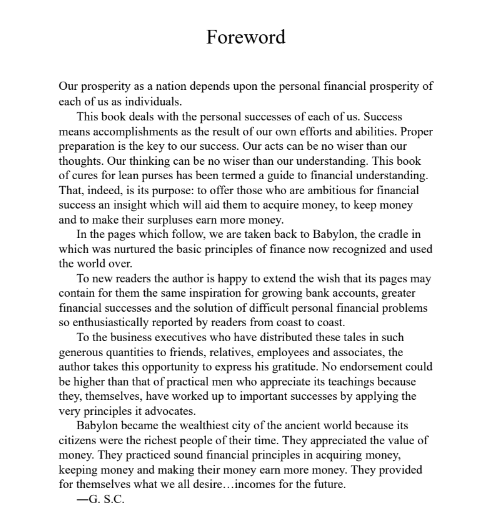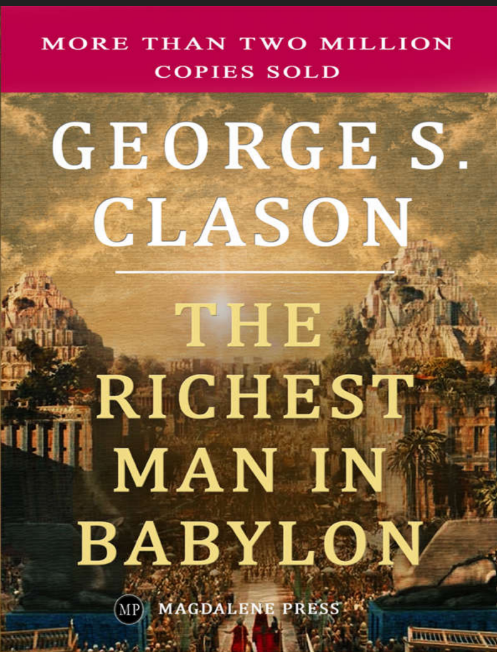


In the pages of history there lives no city more glamorous than Babylon. Its very name conjures visions of wealth and splendor. Its treasures of gold and jewels were fabulous. One naturally pictures such a wealthy city as located in a suitable setting of tropical luxury, surrounded by rich natural resources of forests, and mines. Such was not the case. It was located beside the Euphrates River, in a flat, arid valley. It had no forests, no mines—not even stone for building. It was not even located upon a natural trade-route. The rainfall was insufficient to raise crops. Babylon is an outstanding example of man’s ability to achieve great objectives, using whatever means are at his disposal.
All of the resources supporting this large city were man-developed. All of its riches were manmade. Babylon possessed just two natural resources—a fertile soil and water in the river. With one of the greatest engineering accomplishments of this or any other day, Babylonian engineers diverted the waters from the river by means of dams and immense irrigation canals. Far out across that arid valley went these canals to pour the life giving waters over the fertile soil. This ranks among the first engineering feats known to history. Such abundant crops as were the reward of this irrigation system the world had never seen before.
Today, this valley of the Euphrates, once a populous irrigated farming district, is again a wind-swept arid waste. Scant grass and desert shrubs strive for existence against the windblown sands. Gone are the fertile fields, the mammoth cities and the long caravans of rich merchandise. Nomadic bands of Arabs, securing a scant living by tending small herds, are the only inhabitants. Such it has been since about the beginning of the Christian era. Dotting this valley are earthen hills. For centuries, they were considered by travelers to be nothing else. The attention of archaeologists were finally attracted to them because of broken pieces of pottery and brick washed down by the occasional rain.
Mention has already been made of the irrigation systems which transformed the arid valley into an agricultural paradise. The remains of these canals can still be traced, although they are mostly filled with accumulated sand. Some of them were of such size that, when empty of water, a dozen horses could be ridden abreast along their bottoms. In size they compare favorably with the largest canals in Colorado and Utah. In addition to irrigating the valley lands, Babylonian engineers completed another project of similar magnitude. By means of an elaborate drainage system they reclaimed an immense area of swamp land at the mouths of the Euphrates and Tigris Rivers and put this also under cultivation. Herodotus, the Greek traveler and historian, visited Babylon while it was in its prime and has given us the only known description by an outsider.
His writings give a graphic description of the city and some of the unusual customs of its people. He mentions the remarkable fertility of the soil and the bountiful harvest of wheat and barley which they produced. The glory of Babylon has faded but its wisdom has been preserved for us. For this we are indebted to their form of records. In that distant day, the use of paper had not been invented. Instead, they laboriously engraved their writing upon tablets of moist clay. When completed, these were baked and became hard tile. In size, they were about six by eight inches, and an inch in thickness.
These clay tablets, as they are commonly called, were used much as we use modern forms of writing. Upon them were engraved legends, poetry, history, transcriptions of royal decrees, the laws of the land, titles to property, promissory notes and even letters which were dispatched by messengers to distant cities. From these clay tablets we are permitted an insight into the intimate, personal affairs of the people. For example, one tablet, evidently from the records of a country storekeeper.
In the pages of history there lives no city more glamorous than Babylon. Its very name conjures visions of wealth and splendor. Its treasures of gold and jewels were fabulous. One naturally pictures such a wealthy city as located in a suitable setting of tropical luxury, surrounded by rich natural resources of forests, and mines. Such was not the case. It was located beside the Euphrates River, in a flat, arid valley. It had no forests, no mines—not even stone for building. It was not even located upon a natural trade-route. The rainfall was insufficient to raise crops. Babylon is an outstanding example of man’s ability to achieve great objectives, using whatever means are at his disposal. All of the resources supporting this large city were man-developed. All of its riches were man-made.
As a city, Babylon exists no more. When those energizing human forces that built and maintained the city for thousands of years were withdrawn, it soon became a deserted ruin. The site of the city is in Asia about six hundred miles east of the Suez Canal, just north of the Persian Gulf. The latitude is about thirty degrees above the Equator, practically the same as that of Yuma, Arizona. It possessed a climate similar to that of this American city, hot and dry. Today, this valley of the Euphrates, once a populous irrigated farming district, is again a wind-swept arid waste. Scant grass and desert shrubs strive for existence against the windblown sands. Gone are the fertile fields, the mammoth cities and the long caravans of rich merchandise. Nomadic bands of Arabs, securing a scant living by tending small herds, are the only inhabitants. Such it has been since about the beginning of the Christian era.


